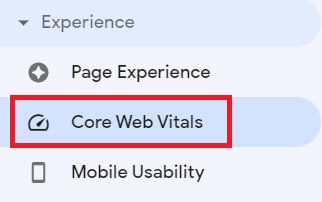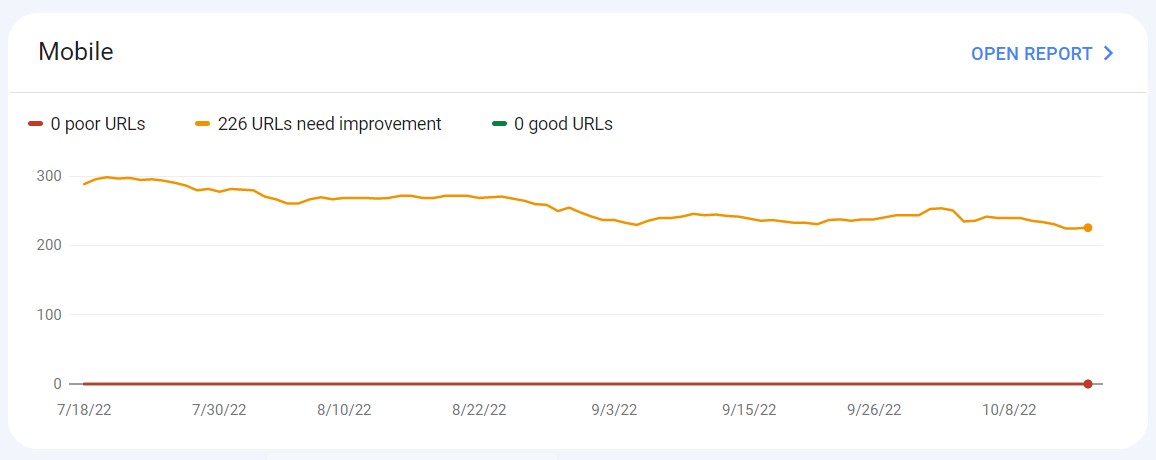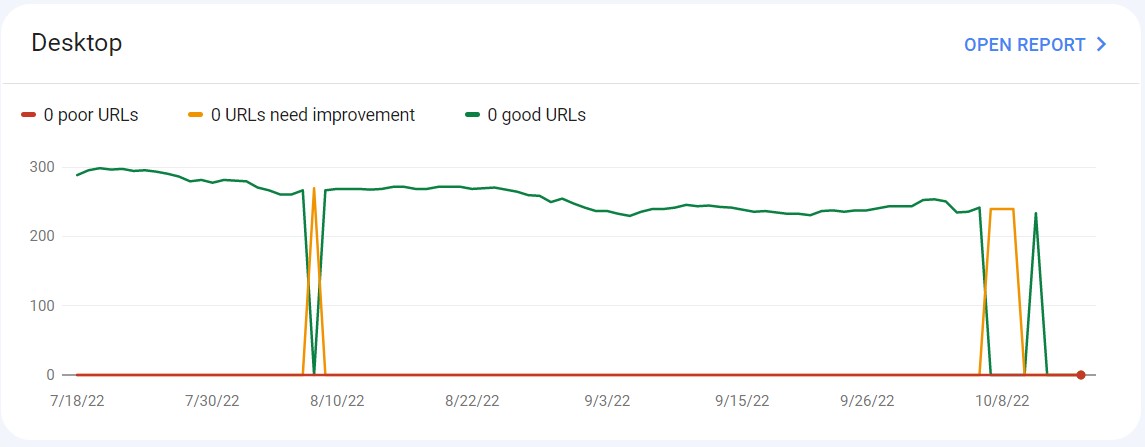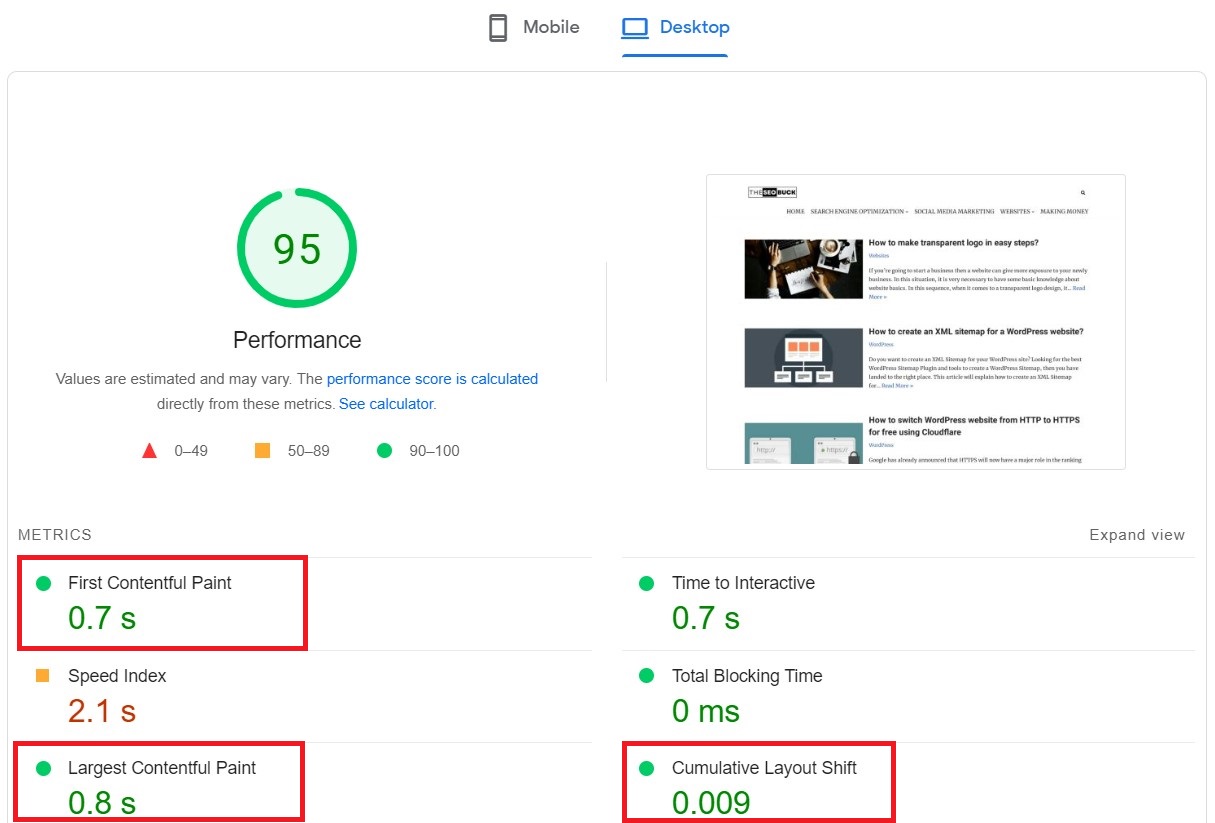Ever since Google announced its new update, the term “Core Web Vitals” has been a topic of discussion among the people. And, according to Google, now Core Web Vitals will be considered as a ranking signal.
Now, Google’s Core Web Vitals feature is going to play an important role. Both the speed of the website and the quality of the URL are measured through the Core Web Vitals itself. The Core Web Vitals is presented as a feature in Google Search Console (Google Webmaster).

You can see the good and bad URLs of your website in the mobile and desktop in this feature. In addition, it also lists the URLs that needs improvement. Separate columns are provided for both mobile and desktop devices (as shown in the image below).


If your URLs do not fulfill the requirements of Google’s Core Web Vitals, then they will appear as an error.
Here, it is vital to monitor the Core Web Vitals regularly and keep it error—free. Because if there is an error in Core Web Vitals, then the ranking of your website will be down very quickly.
Let us now understand about “Web Core Vitals” in detail.
WHAT ARE CORE WEB VITALS?
Core Web Vitals are a set of specific parameters that Google considered necessary in the overall user experience of a webpage.
As Google puts it:
“Core Web Vitals are a set of real-world, user-centered metrics that quantify key aspects of the user experience. They measure dimensions of web usability such as load time, interactivity, and the stability of content as it loads (so you don’t accidentally tap that button when it shifts under your finger – how annoying!)”
Core Web Vitals combine three terms to create Core Web Vitals. Core Web Vitals mainly consists of —
- Largest Contentful Paint (LCP)
- First Input Delay (FID); and
- Cumulative Layout Shift (CLS).
These three parameters together make up the Core Web Vitals. If you want to keep your website in the top position in Google, then you will have to maintain these three factors. Only then you can maintain your website ranking or else your website ranking will be down very fast.
PARAMETERS OF CORE WEB VITALS:
The core web vitals have three parameters — LCP, FID and CLS. Let us now understand them in detail.
1. Largest Contentful Paint (LCP):
We also know LCP as the largest Contentful Paint. This actually shows how much time the largest element is visible in the fold area above your website.
In simple words, after clicking on the link of a website, at what time the largest element appears in the viewport, it brings up the LCP.
The most common causes of a poor LCP are:
- Slow server response times
- Render-blocking JavaScript and CSS
- Slow resource load times
- Client-side rendering
According to Google, if the LCP score of your website is less than 2.5 seconds, then it is good.
And, if it is 2.5 to 4.5 seconds, then it needs improvement and if it is more than 4.5 seconds, then your website URL is poor.
2. First Input Delay (FID):
The full form of FID is First Input Delay. This is the time when the user first interacts with your website.
In simple words, when the user clicks on the link of your website, the first element of your website is visible to him in how long he is, called FID. According to Google,
First Input Delay (FID) measures the time from when a user first interacts with your site (i.e. when they click a link, tap on a button, or use a custom, JavaScript-powered control) to the time when the browser is actually able to respond to that interaction.
According to Google, if the FID of your website is less than 100 ms, then it falls under the category of Good.
If it is between 100 and 300 milliseconds, then you need to improve it and if it is more than 300 milliseconds then your FID falls in the poor category.
3. Cumulative Layout Shift (CLS):
The full-form of CLS is Cumulative Layout Shift. This means when someone clicks on your website, how much the layout of your website shifts.
According to Google, if the layout of your website shifts 0.1 then it comes in good. But, if it is 0.1 to 0.25, then you need to improve it and if it is more than 0.25 then your URL is poor.
You can check your LCP, FID and CLS score using Google PageSpeed Insights.

It can help you to a great extent. Especially when it comes to improve spotting areas. What’s also great about using Google Pagespeed Insights is that you get to spy how your page has performed in the real world.
HOW TO USE CORE WEB VITALS IN GOOGLE WEBMASTER:
Now, I will tell you how you can check the Core Web Vitals report in Google Search Console. First of all, you have to login to your Google Webmaster Dashboard. Now, you will come to the homepage of Google search Console.
Here you will see the option of Core Web Vitals in the left side of the panel, by clicking on it you can extract the report of Core Web Vitals.
In the second way, you will see the option of Page Experience. You have to click on it. Here you will see the option of Core Web Vitals. You can extract your Core Web Vital Report from here. All the URLs on your website, which will be suffering from Core Web Vitals issues, will be listed here.
HOW TO FIX CORE WEB VITALS ISSUES:
Friends, first of all you have to understand the reason why this issue has been caused. For this, you should go to the Google Search Console and check the Core Web report and try to understand the reason. The main reason comes from LCP, FID and CLS. To improve all of them, you have to fulfill some parameters:
- Just like you have to optimize your image well, serve in Image next Generation.
- Try to remove the Render Blocking Resources.
- Minify JavaScript and CSS.
- Remove unused JavaScript and use the correct font.
After doing all this, you have to validate fix and click on validate. This issue will be resolved in a few days (in some cases it takes about a month).
TAKE AWAY
Now you must come to know what are Core Web Vitals and how to improve them. It will be a fantastic way to boost your page rankings in the SERPs.
If you have any question or suggestion, please leave in the comment section below.

